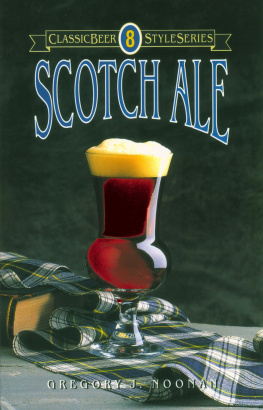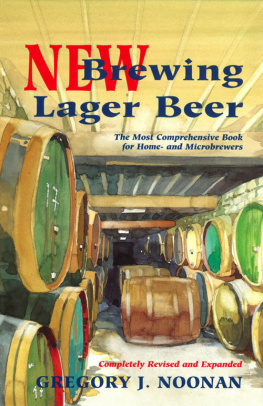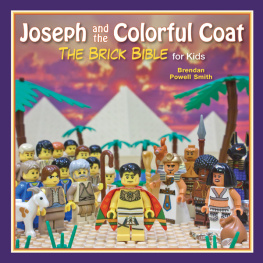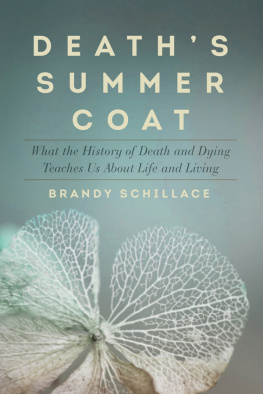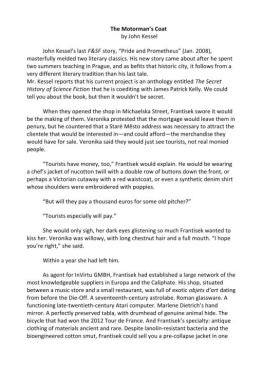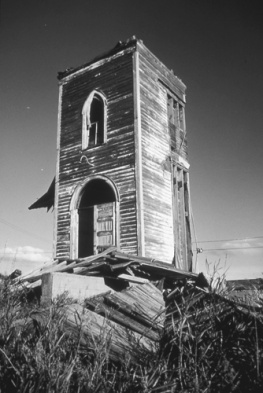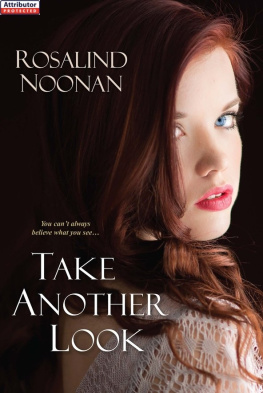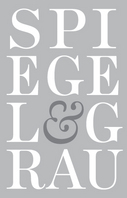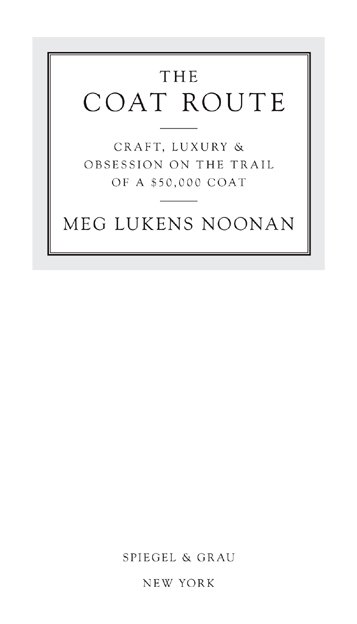
The Coat Route is a work of nonfiction. Some names and identifying details have been changed.
Copyright 2013 by Meg Lukens Noonan
All rights reserved.
Published in the United States by Spiegel & Grau, an imprint of The Random House Publishing Group, a division of Random House, Inc., New York.
S PIEGEL & G RAU and Design is a registered trademark of Random House, Inc.
Library of Congress Cataloging-in-Publication Data
Noonan, Meg Lukens.
The coat route : craft, luxury, and obsession on the trail of a $50,000 coat / Meg Lukens Noonan.
pages cm
Includes bibliographical references.
eISBN: 978-0-679-60517-1
1. Luxury. 2. Custom-made clothing. I. Title.
HB841.N66 2013
338.4768714dc23 2012042994
www.spiegelandgrau.com
Jacket design: Gabriele Wilson
Jacket photograph: Dominic Neitz
v3.1
One should either be a work of art, or wear a work of art.
OSCAR WILDE
The woolen-coat is the produce of the joint labor of a great multitude of workmen. The shepherd, the sorter of the wool, the wool-comber or carder, the dyer, the scribbler, the spinner, the weaver, the fuller, the dresser, with many others, must all join their different arts in order to complete even this homely production.
ADAM SMITH
CONTENTS

INTRODUCTION

N ot long ago, I came across a website belonging to John H. Cutler, a fourth-generation tailor in Sydney, Australia. The entire site was devoted to one particular overcoat Cutler had made for a longtime client. The coat was, he wrote, the ultimate expression of the bespoke tailors art. At the time, I had only a hazy understanding of what bespoke meant, though I had noticed the word popping up a lot lately. I had seen ads for bespoke bicycle tours and bespoke spa treatments. Virgin Atlantic airlines, I read, had even begun serving drinks in first class with what were called bespoke ice cubes, crafted in the image of founder Sir Richard Branson. I took it to be a Masterpiece Theatreish way of saying customized.
While that is basically true, bespoke, it turns out, is a much more specific term than that. The word was born in the tailoring trade in seventeenth-century England. When a customer went to his local tailor to order a garment, he would first select and reserve, or bespeak, a length of fabric. That cloth was then bespoken for. Bespoke evolved to mean one thing and one thing only: clothing made from scratch, using a pattern drafted to the precise measurements and wishes of one individual.
Four hundred years later, tailors, understandably, think of bespoke as their word. I wasnt surprised to learn that they werent happy with the businesses that were using the word to inject their products and services with instant upper-crust British cachet. The tailors were also peeved that some apparel makers were advertising their clothing as bespoke when it was, at best, only partially made to measure.
On Londons Savile Row, the short side street that is the world hub of luxury custom tailoring, a complaint was brought against a company that opened an office there but was making its suits in Germany from only marginally tweaked standard patterns. The petition to stop that firm from calling its wares bespoke was rejected by a British advertising-standards regulating board, however, which said that, essentially, the word was too far out of the barn to be reined back in.
Vivaldis stirring Stabat Mater played in the background as I browsed Cutlers website, scrolling through flowery text and clicking on evocative images. There was John Cutler, silver-haired, sixty-something, thick in the middle, with a tape measure around his neck, bent over a worktable. Here were close-ups of buttons and thimbles and pins, lit like still-life tableaux. A shot of a hand pulling a needle and thread through cloth suggested no less than Michelangelos hand of God. And then there was the coat itself, of course, buttoned onto a tailors dummy and photographed from every angle.
This was, I gathered, the overcoat to end all overcoats. The garment had taken months from concept to completion, and the tailor had used only the finest materials in the making of it. The coat was made of wool woven from the gossamer fleece of the vicua, a small llama-like creature found only in the wild on the high plateaus of South Americas Andes Mountains. Softer, lighter, warmer, and far more rare than cashmere, it was, the website declared, the worlds most magnificent clothand its most expensive.
For the lining, Cutler had procured a length of the best Italian silk, created by a renowned Florentine designer. The buttons were the ne plus ultra of fasteners, crafted of Indian water-buffalo horn by a 150-year-old English button-making firm. The coat had even been trimmed inside with an eighteen-karat-gold plaque created by the same master hand engraver who was commissioned by the British royal family to craft a signet ring for Prince Charles and the wedding invitations for Princess Diana.
But that wasnt all. The tailor and his two-man workroom team had made the overcoat entirely by hand, one tiny stitch at a time.
I made the coat as if machines did not exist, Cutler had written.
This, apparently, was highly unusual even in the bespoke-apparel world. The website didnt come right out and say how much the coat had costdecorum, and allbut it wasnt hard to click through some links to press coverage to discover the price. The client paid $50,000 for it.
I studied the photographs of the navy-blue overcoat. The plain, boxy, single-breasted number looked, to my untrained eye, like something you might find on Macys clearance rack. I was stumped. And I had a lot of questions.
Why would someone pay that kind of money for a cloth coat that bore no luxury designer labelno Tom Ford, no Burberry Prorsum, no Loro Piana? A generic, if you will. Where was the fun in owning something that was so under the radar that no one but you and your tailor knew how special it was? Who had the patience to wait weeks, even months, for a coat or a suit when you wanted it today? How did bespoke tailors stay in business in an age of instant gratification and overnight shipping? And just who, in these times of economic turmoil, had a spare $50,000 to spend on a wool overcoat?
I was still thinking about that overcoat a few days later, when I was putting away laundry, trying to jam clothes into my teenage daughters closets and bureaus, which were already filled to capacity with dresses and tunics and jeans and skirts and sweaters from places like H&M, Target, ASOS, and Forever 21. My closet was in no better shape, overflowing as it was with not-so-great things.
What was all of this stuff? I fingered the fabrics and studied the labels. Much of it contained polyester or some subspecies of itand almost every piece had been made in China. A lot of it looked worse for wear, but that was something I had come to expect. These were clothes with built-in obsolescence. They might as well have had a use by date on them, like a container of cottage cheese. When they split at the seams or pilled or went out of fashion, I would, if and when I got around to it, load them into big plastic bags and take them to a local thrift shop, or, if they were really not wearable, just toss them in the trash.


